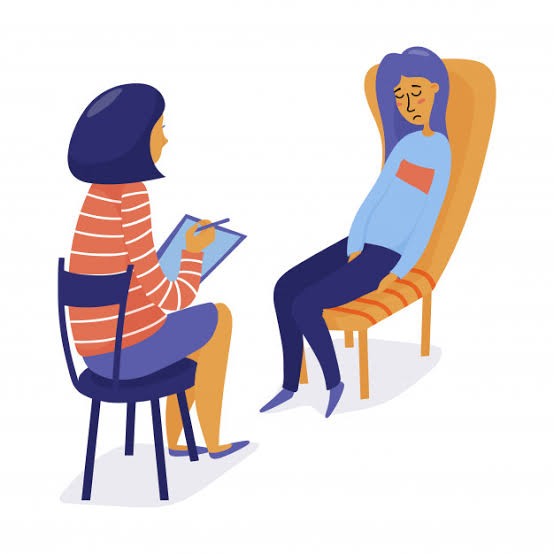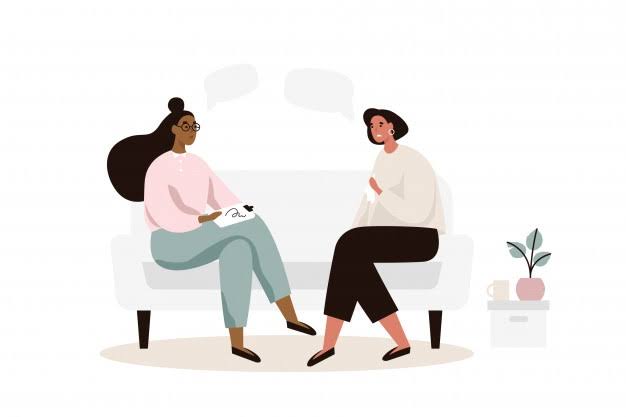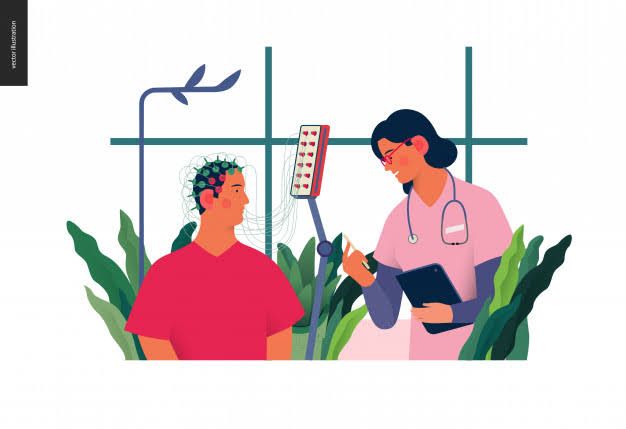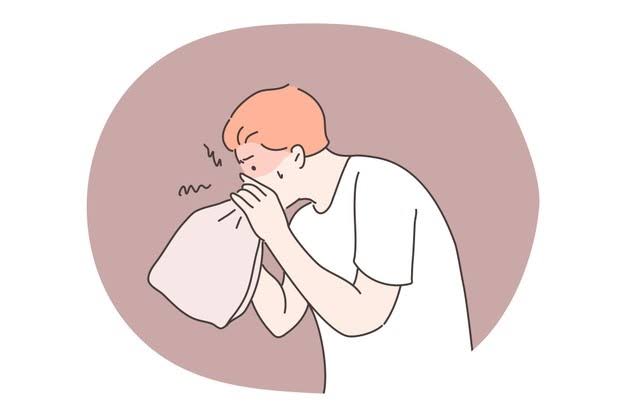Before trying to locate the disability status of both these anomalies one should look into the ways they can affect one’s life. Anxiety or Common anxiety can be defined as a feeling of unease. Anxiety varies in intensity from person to person hence it can sometimes to be mild or severe. Anxiety is perhaps one of the few psychological anomalies that are experienced by almost every person at least once in their life. Whether it’s a student desperately anxious regarding his annual results or an adult whose anxieties are arising from an upcoming interview, anxiety can always find its way into our lives. According to the Anxiety and Depression Association of America (ADAA);
“Around 18% of adults in The states are annually diagnosed with anxiety disorders. It’s perhaps the most common mental ailment among the youth. Furthermore, less than 37% of people struggling with wth anxiety choose to seek help for this condition.”

As stated earlier, common anxiety tends to wear off temporarily and there are no specific criteria for its diagnosis. Meanwhile, in order to be diagnosed as a GAD patient, one must show recurrent symptoms of GAD for up to six months. GAD is irrational and chronic and has the tendency to interfere with your personal life and career aspirations. So, the question remains does this situation qualify as a disability?
Are Anxiety and GAD disabilities?
Anxiety disorders that have symptoms mimicking PTSD, phobias and panic attacks can qualify as disabilities. Accordingly, it’s fair to say that yes Generalized anxiety disorder does qualify as a disability and one can secure a state’s social security benefits for this condition. The SSA claims that any mental or physical anomaly that has the capability to keep a person from working for around twelve or more months can be easily regarded as a disability. Generalized anxiety disorder has the tendency to do the same to you due to the number of phobias it can instil into a person.

According to the disability criteria set by the ADA, an individual that struggles with either physical or mental impairment and notices the involvement of these impairments in their major life events can be appropriate for the disability tag. Although there are still some regulations involved. The sufferer in question should have a history or record regarding Generalized anxiety disorder e.g. medical reports, reviews shared by health professionals discussing the intensity of symptoms etc.
Anxiety and GAD: Complications While Claiming Benefits For A Disability

Let’s be realistic and admit how essential social security benefits can be for a disabled individual. Anxiety disorders like GAD tend to render a man useless and mentally incapable to support themselves financially. In that case, the state can offer some form of relief and take some weight off the shoulders if that person. The kind of medical evidence that’s required to claim disability in the case of a mental disorder is usually quite subjective. Physical disabilities on the other side of the spectrum usually don’t face such complications but in the case of GAD, the criteria are hard-to-document because of the involvement of feelings and behaviour as symptoms. So before filing a disability to claim one must ensure the presence of their medical documentation as it’s essential to show how disability interferes with your life on a daily basis.
Is Depression A Disability?

Under the Americans with Disabilities Act (ADA), depression has been enlisted as one of the many mental Disabilities. Depression is a mood disorder that can alter your life to the maximum. It can affect your ability to work and increase suicidal tendencies at the same time. A person who’s constantly a prisoner of his own mind and has a life-risking anomaly does have the attributes to qualify as a disabled person. According to the WHO;
Depression is an extremely common mental disorder and globally affects, more than 264 million people of all ages
It’s also important to note that there are certain kinds of depression that don’t qualify as a disability. These kinds of depression aren’t treatment-resistant and with the help of relevant therapy can be tackled. So, in order to qualify as a disabled person with depression you must fit into the criteria listed down below;
- Your medical record and treatment history should prove the presence of treatment-resistant depression
- You should be able to prove that depression has rendered you
- unable to work for at least 12 months
- You should own fewer than $2,000 in assets in order to claim disability benefits
.
Agoraphobia

Agoraphobia is a kind of anxiety disorder that instills the fear of a foreign environment in a person. Agoraphobic individuals usually regard their homes as a safe space and are highly reluctant to go someplace else. The major contributor to such anti-social tendencies is the fear of an unknown situation. This fear can cause an unlimited amount of irrational panic and anxiety.
Is Agarophobia a disability?
Yes, the SSA labels Agoraphobia as a disability. Due to the panic attacks linked with disability one cannot deem themselves fit to take part in a normal person’s routine. If you’re unable to visit an unknown public place how do you expect yourself to have a professional career? As we’ve seen in depression’s case in order for an Agoraphobic individual to claim disability benefits their condition has to be debilitating.
The presence of Agoraphobia is quite hard to locate until it takes its most intense form. That’s when you’ll find the situation getting worse with the onset of frequent panic disorders. Agoraphobic individuals frequently avoid public spaces like; Shopping arenas, Cinemas, Public transits etc. Another noticeable sign of Agoraphobia is that individuals with this condition rely more on tactile signals. The reason behind this is their weak vestibular function and when there are no visual cues involved it can lead to excessive anxiety.
Agoraphobia as a Disability: Causes

While we’re discussing Agoraphobia as a disability it’s essential to take a look at the factors that contribute to its onset. If you’re able to identify some of these causes with your condition you’re more likely to be aware of your disability. Some of the leading causes of this psychological disability include;
- Genetics; if there’s someone in your familial lineage that’s on Agoraphobia’s spectrum you’re more likely to have it
- Repetitive use of sleeping pills and sleep tranquilizers in the past
- A stressful environment and unfavourable social factors
- Traumatic events e.g. death of a close family member in an unfamiliar environment
- Nicotine dependency (frequently smoking cigarettes)
Agoraphobia As a Disability: Treatment
- Therapists recommend systematic desensitization. It’s a common and popular relief-inducing practice among both patients of Agoraphobia and other panic disorders. Furthermore, the major purpose of this trigger-relieving exposure therapy is to diminish any residual fears instead of using avoidance as a coping mechanism.

- Another successful therapeutic practice that helps with Agoraphobia is holding factual and productive talks with a patient. Agoraphobic individuals usually have certain irrational fears about being in public and tend to assume fake scenarios. Cognitive restructuring can help in coaching a patient and replacing those fake scenarios with factual information about the environment.
Final Words
Mental anomalies have long been undermined by people as they’re much for “hidden” to the naked eye. People struggling with disabilities like GAD and Agoraphobia tend to struggle in silence and their symptoms are much more inward as compared to a physical disability. So, it’s evident how essential it is for one to actualize their disability status. Once the true status of an anomaly comes to life, the sufferer is more prone to taking their symptoms seriously. There are more chances that he/she will now choose to seek immediate help instead of laying off their condition as a mild health issue.
FAQs
What’s a common trigger for agoraphobia?
Panics associated with agoraphobia often get triggered when an individual visits a place that has negative memories associated with it. Such kinds of triggers can cause a panic disorder or an anxiety disorder. Hence it’s fair to say that in the case of Agoraphobia, places, and situations ate common triggers, and avoiding those places acts as a coping mechanism.
Is Dystichiphobia similar to Agoraphobia?
Even the similarities in name and common signs will lead you onto believing that Dystichiphobia and Agoraphobia are similar, they’re actually not. Dystychiphobia can be defined as an excessive fear of landing in an accident. One way or another it’s linked with a serious or near-fatal accident that has happened in the past. Perhaps the only commonality these both conditions share is how both of these debilitating conditions can paralyze a person their fear.
How many kinds of depression are there?
You’d be bamboozled to find out that depression can be classified into various categories based on the nature of the cause. Some of the most significant kinds of depression are;
- Seasonal Affective Disorder (SAD)
- Psychotic Depression.
- Peripartum (Postpartum) Depression
- ‘Situational’ Depression.
- Major Depression.
- Persistent Depressive Disorder
- Bipolar Disorder
- Premenstrual Dysphoric Disorder (PMDD)
What are some common signs of Seasonally induced depression?
Whenever winter’s around the corner and it begins to get slightly chilly in the afternoon you might’ve heard people complaining about seasonal depression. During that part of the year, the sun sights earlier than it does in summer, and reduction in daylight is perhaps one of the many reasons why people tend to feel more demotivated. Some of the most major symptoms of SAD may include:
- Having zero interest in the activities that used to be pleasant
- Insomnia
- Fatigue
- Feeling de-motivated nearly every day
- Lack of appetite or weight loss
- Getting easily agitated over the bare minimum
- Feeling of hopelessness
- Inability to concentrate
- Lack of socialization
- Increase in suicidal tendencies
What are some common symptoms of GAD?
Although symptoms for every case of GAD vary from person to person. There are still certain textbook signs that might be pretty common among all sufferers. Most of these are physical symptoms of GAD and might be quite visible to your near and dear ones as well. Some of the red flags that can indicate the presence of GAD are;
- Inability to relax
- Agitation
- Muscle tightness or body soreness
- Insomnia and sleep deprivation
- Constant feeling of being on the edge
- Cloudy thoughts
Why are some people so scared of leaving their house?
It’s okay to take a break from socialization every once in a while. Sometimes people just run out of energy and don’t feel the need to interact. Meanwhile, if someone’s showing abnormally erratic behavior in this regard, one can assume that perhaps a phobia might be at work. The name of that particular phobia is Agoraphobia. This is a type of anxiety disorder that’s comprised of the fear to leave safe spaces and known environments e.g. home. Agoraphobia is a quite intense disorder that can stop a person from leaving their house for months if it’s present in its most intense form.
Why are people suffering from Agoraphobia unable to work?
Agoraphobia is characterized by a fear of leaving known spaces. In this condition visiting public environments can result in frequent panic attacks and disproportionate anxiety. Henceforth, Agoraphobia is a huge issue for those career-oriented individuals who cannot work in a professional official space.
What’s the difference between anxiety and a generalized anxiety disorder?
A lay may choose to label both GAD and anxiety as umbrella terms for each other but both of these anomalies are quite different. Anxiety and Generalized Anxiety Disorder vary in terms of intensity. In the case of normal anxiety, although there’s still a fearful situation involved, it’s less intense. The triggers in normal anxiety’s case are nevertheless intense but it’s much easier to get over those triggers with meditative practices. Meanwhile, GAD forces an individual to practically worry about everything. GAD is a life-altering experience and it’s much more intense than normal anxiety. It’s a form of chronic anxiety that can lead to an endless cycle of tension even in some of the most harmless situations.







